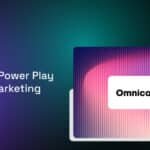Macro-level audience targeting has become obsolete in contemporary marketing. How can hyper-segmentation help marketers drive value?
In today’s saturated brand marketing landscape, a generic approach won’t cut it to cater to your B2B leads. Your potential customers demand more than a one-size-fits-all solution. They want personalized attention that addresses their unique pain points. This is where hyper-segmentation comes in. It is one of the most effective ways to reach a large pool of b2b lead generation services.
Statista’s survey found that 51% of respondents believe enhanced CX was the biggest outcome of personalization in 2023.
Another survey revealed that the personalization software market would surpass 9.5 billion U.S. dollars in 2024.
In this article, we dive into the fascinating concept of audience hyper-segmentation and offer actionable tips on how businesses can leverage it to drive results.
What is Hyper-Segmentation?
Hyper-segmentation is the process of dividing a large audience base into smaller segments to craft marketing strategies to cater to those segments. The idea is to categorize the audience into small and specific segments through the lead enrichment process.
Benefits of Hyper-Segmentation:
- Design 1:1 personalization to each account
- Drive better engagement
- With better click-through rates
- Prioritize your high-value audience
A hyper-segmented audience is no longer bothered by irrelevant campaigns or ads. When optimally targeted, it receives specific solutions to its business challenges and is ready to invest time in gauging your product or service.
How do we create a hyper-segmented audience?
The art of creating a hyper-segmented audience primarily begins after data collection from these data sources: the first-party data (your website analytics, CRM, email-marketing campaigns), second-party data (data purchased from other companies) and third-party (data collected from data aggregators or B2B lead providers). Leveraging the power of AI-based business intelligence tools to collect data from third-party providers also helps precisely gauge the target audience to derive meaningful insights for hyper-segmentation.
Different ways to segment the target audience include segmentation based on:
- Demographics
- Firmographics
- Psychographics
- Needs-based
- Account-based
- Funnel-based
Demographics-based
This type of segmentation includes factors like age, gender, income, location, education, occupation, and designation.
Firmographics
Data like industry, company size, organizational structure, annual revenue, and technological sophistication are elements building this category.
Psychographics
This refers to a prospect’s philosophies, aspirations, values, and personality traits. You can access it by leveraging social media tools, surveys published by renowned research publications, website analytics, and more.
Needs-based
Understanding the needs of a prospect implies knowing their pain points. Needs-based segmentation is effective as it addresses the current issue and offers a viable solution.
Account-based
A fundamental component of account-based marketing, account-based segmentation involves identifying high-value accounts by analyzing industrial and revenue reports or competitor analysis.
Funnel-based
This comprehensive segmentation consists of prospect data across the various stages of the sales funnel. The idea is to tailor the strategies accordingly for effective conversion. Leads who have interacted on emails and signed up for newsletters can be categorized under Top-of Funnel (TOFU). The ones who download eBooks or guides or visit your website pages based on marketing campaigns get qualified under Middle-of-Funnel (MOFU), and those prospects who have shown interest in product/service demos or requested case studies can be graded under Bottom-of-Funnel (BOFU). This segmentation focuses on curating tailored strategies for prospects across these various sales funnel layers.
Leading tools that help with Hyper-segmentation
Marketers must leverage some of the top-contending tools for segmentation to unlock the B2B market hassle-free. These tools help segment the audience and present the data in an easy-to-interpret dashboard that helps gain meaningful insights.
Some advanced Business Intelligence (BI) tools like Looker, and Tableau, Customer intelligence (CI) platforms like Qualtrics, and Zoho Analytics, and some Marketing Automation Platforms (MAPS) like HubSpot, or Marketo are worth the investment.
Before investing in any of these tools, it is imperative to consider the following factors:
- Budget: First and foremost, the tool needs to fit the marketing budget
- Ease of integration: The tool must seamlessly integrate with your existing CRM
- Alignment with Marketing goals: The tools must align with your marketing goals
The best practice would be combining these tools’ offerings with qualitative data collection like surveys and interviews.
Takeaway
In a crowded B2B market, it is challenging to connect with your audience. There is a rising need to go beyond demographics and deliver hyper-personalized content. The idea is to shift from macro to micro by adding more definition to the audience data and making it as granular as possible. Hyper-segmentation helps harness personalization by presenting apt content to the target audience. It helps enhance brand value, create better engagement, drive higher click-through rates, and gives enterprises opportunities to boost their revenue manifold. Finally, fine-tuning hyper-segmentation is imperative for sustaining ongoing marketing success and realizing the full potential of targeted campaigns.





